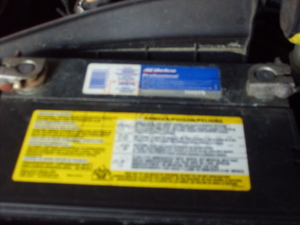Some car owners take special pride in the longevity of their battery. But squeezing another month or two out of a battery can be costly in the end. By sacrificing a few more months of service and anticipating your battery’s demise you can insure a seamless transition of power – sort of like the government.
How to select a battery that matches your priorities and fits in your car is a skill worth learning. The considerations are size, power and reserve capacity and all the information may be on the battery itself. The first step is identifying the size of battery that you need. You can measure the height,length and width of the battery to be able to confirm that your decoding of the battery information is accurate.
To determine that the size and terminal configuration is right go to www.batteryweb.com/bci.cfm after identifying the BCI group to which your battery belongs. Battery marketers have made it easy by using BCI group numbers in their cataloging, so a Delco 786YR is a battery within the 78 BCI group with a six year warranty.
When you go to the battery web chart, you’ll find the dimensions and that this is a side terminal battery with the positive post on the left side. Always orient the battery with the terminals closest to you to determine which side the positive post is on. The BCI group for your car may also be found in your owner’s manual. Once you are confident of the size requirements, you can determine your power needs.
Car batteries are rated by cranking amps and cold cranking amps – CA and CCA respectively. These ratings should appear on your battery. If you’re interested, definitions are readily available on-line. Let’s just say that Cold Cranking Amps is a higher standard against which to rate a battery and reflects how well it handles more stressful starting conditions. Your new battery should at least equal the old one in this rating. Inherent in this choice is the idea that the original battery was engineered to start your vehicle and optimally run all its accessories.
The final consideration is Reserve Capacity – RC. This standard is a little harder to chase down as not all batteries show the reserve capacity. However, knowing what it means and how to use the information in choosing a car battery is important. Reserve capacity is the number of minutes your battery can supply enough power to run the accessories in your car should the alternator fail. So if your alternator belt broke or the alternator itself stopped supplying your charging system with current, a battery with a RC of 120 minutes would give you some driving time to find assistance.
With this information you can make an intelligent choice. One suggestion is to allow the Reserve Capacity to be the determining factor. Choose batteries that meet your Cold Cranking Amps requirements and then find the battery with the longest Reserve Capacity.



